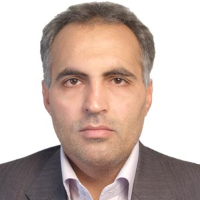Diathesis as an Ancient Model in Architectural Designing of Iranian Bathroom
Diathesis is one of the fundamental concepts in Islamic-Iranian medicine which has a special place in traditional Persian medicine; because the general principles in diagnosis of treatment and keeping healthy are expressed on the basis of the study of diathesis. Considering the diathesis and the placement of it in traditional Persian medicine, we find that this knowledge is settled based on the study of diathesis. Iranian architects have attempted to use it practically since many years ago, as a model in their architectural works. Among the buildings which have conformed to the model of diathesis of design, it can be referred to the Iranian bathroom architecture. Paying attention to the importance of faith and ethics on the health of the body and making it as the ground work for the health of the soul, Iranian bathroom architecture, that the religious and moral principles are the source of it, designed as an old-fashioned sample along to the health of body and the soul and Traditional-Islamic medicine instructions. Therefore, the peace a person gets after taking a bath has a direct connection with the practical concepts hidden in Iranian bathroom architecture. Looking at the function and the place of bathrooms to keep healthy and to excrete some of diseases we find that principles and apparent and practical structure of bathrooms is planned on the human diathesis. This article sets this fundamental principle forth for discussion Islamic-Iranian traditional medicine as a model expresses some facts in relation to the body health which has been artistically reflected in designing the architecture of Iranian bathrooms. Hence the authors have attempted to recognize the therapeutic aspects in the texts which are relevant to Islamic period medicine such as contemplations and opinions of Immaculates in Teb-ol Reza (Imam Reza’s medicine), physicians and philosophers such as Avicenna in Kanon (Law), Farabi in Siasat-e Madineh (Medina’s politics), Guilani in Kholasat-al Hekmat Nasseri, Jorjani in Zakhireh Kharazmshahi, Kermani in Resaleh Dallakiyyah, Khorasani in Kholasat-al Hekmat, and many great thinkers so that they can investigate how the abovementioned concepts would be reflected in the architecture of the bathroom. The key question of the current research is this: what characteristics does diathesis have in traditional architecture of Iranian bathrooms?
In order to answer this question, a case-study method as well as compositional (combinational) strategies has been used. And in order to collect the data required, the field-dependent and library methods were applied. Afterwards, 10 samples of the architecture of Iranian bathrooms were selected, which are of high-quality values and can be considered in expressing the concepts which stem from the study of diathesis. Regarding the regional diversity of Iran, it has been attempted to select at least one sample from each region. What the present research ultimately emphasizes is to pay attention to the effect of Islamic-Iranian medicine’s physicians’ opinions as well as the degrees of health in the framework of two approaches: washing-cleanliness and being therapeutic recognizable in the architecture of Iranian bathrooms. Washing and cleanliness are revealed by massaging, cleaning and cure by using the model of diathesis, and its reflection in a communicative-service atmosphere and hierarchy (gradual change) as well as making balance (dynamism) which produce compatibility, gradual change in our body, and ultimately produce balance in human nature as well as architecture, leading to developing health. As the human physical and mental balances are gradually lost, retrieving such a balance in human diathesis and ego takes place gradually. For the same reason, gradual rites of bathing are compatible with the resemblance of nature system as well as human nature with the structure of quadratic elements of human diathesis as well as bathroom skeletal parts. Such concepts are recognizable as the criteria of designing in the works analyzed. Its structure has been made based on 4 main diatheses: heat and coldness, dry and wet, which are compatible with the 4 seasons and quadratic mucus of body as well as human lifetime days. The bathroom has been made in a quartet form or with 4 parts (the first part is heat and dry, the second is cold and wet, the third is heat and wet, and the forth is heat and dry). The aim of such structural and content similarities is to develop an environment which would be compatible with human nature to maintain the diathesis balance and the enduring health of body and soul.
- حق عضویت دریافتی صرف حمایت از نشریات عضو و نگهداری، تکمیل و توسعه مگیران میشود.
- پرداخت حق اشتراک و دانلود مقالات اجازه بازنشر آن در سایر رسانههای چاپی و دیجیتال را به کاربر نمیدهد.


